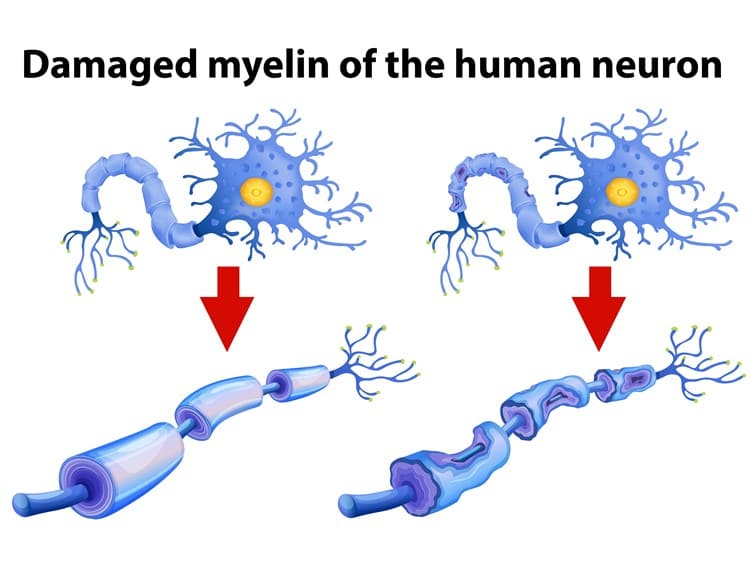Nerve cell fibers (myelin sheet fibers) are covered by insulating material. Transverse myelitis is a condition in which the insulating material is damaged. It causes inflammation on both the sides of the spinal cord.
Transverse Myelitis Symptoms: Spinal cord sends messages throughout the body, but this condition interrupts these messages. When this happens, the person with transverse myelitis experiences sensory problems, muscle pain, weakness, bladder and bowel dysfunction, and even paralysis.
What are the causes of transverse myelitis?
The exact cause of transverse myelitis is unknown. Sometimes there is no known cause. Many different conditions can cause transverse myelitis. The prominent among those include immune system disorders and infections (viral, bacterial, and fungal infections) of the central nervous system. Multiple sclerosis can also cause myelin disorders. Neuromyelitis Optica (Devic’s disease) and sarcoidosis may also cause this condition.
Transverse Myelitis symptoms mimic the symptoms of other neurological conditions. The symptoms associated with transverse myelitis are often confused with the stroke of the spinal cord. Therefore, neurologists approach the diagnosis with due diligence.
What are the signs and symptoms of transverse myelitis?
Transverse myelitis symptoms: They develop gradually over a period of time ranging from a few hours, days, or even weeks. The conditions affect either one side of the body or both sides. Therefore, symptoms manifest on either one side or both sides of the body.
The signs and symptoms associated with transverse myelitis include:
Abnormal sensations: Patients experience tingling, burning sensations, coldness, and numbness. People with this condition show sensitivity to extreme cold or heat or even to the touch of clothing. People with transverse myelitis may also feel like the skin of their chest, abdomen, or legs is wrapped tightly.
Weakness in the arms or legs: Some people experience heaviness in the legs while dragging or stumbling on their feet. Complete paralysis or severe weakness may develop in some.
Anxiety and depression may result due to long-term complications associated with transverse myelitis.
Pain
Pain symptoms differ based on the part of the spinal cord affected. Shooting or sharp pain run down the legs or arms or around the abdomen or chest. In some cases, sudden and sharp pain begins in the lower back.
Loss of bladder and bowel control
Bladder and bowel problems associated with transverse myelitis include constipation, difficulty urinating, urinary incontinence, and frequent urge to urinate.
Why is Prompt Diagnosis by a neurologist necessary?
The symptoms associated with the condition may also be due to another less common condition (stroke of the spinal cord). The blockage of a blood vessel that supplies blood to the spinal cord causes a stroke of the spinal cord. Blood clotting or surgery of the aorta may cause this condition. Therefore, prompt diagnosis and appropriate treatment are necessary.
Treatment
Treatment for transverse myelitis includes medications and rehabilitative therapy. Most people with transverse myelitis recover at least partially. Those with severe attacks sometimes are left with major disabilities.
When to see a doctor
If you experience the signs and symptoms of transverse myelitis, call your neurologist to seek emergency medical care. Though a wide range of other neurological issues can cause similar types of symptoms (arms and legs weakness, sensory problems, bladder weakness, or bowel dysfunction), your neurologist will rule out other conditions. Even if the cause is due to compression of the spinal cord, you will need surgical emergency care.


